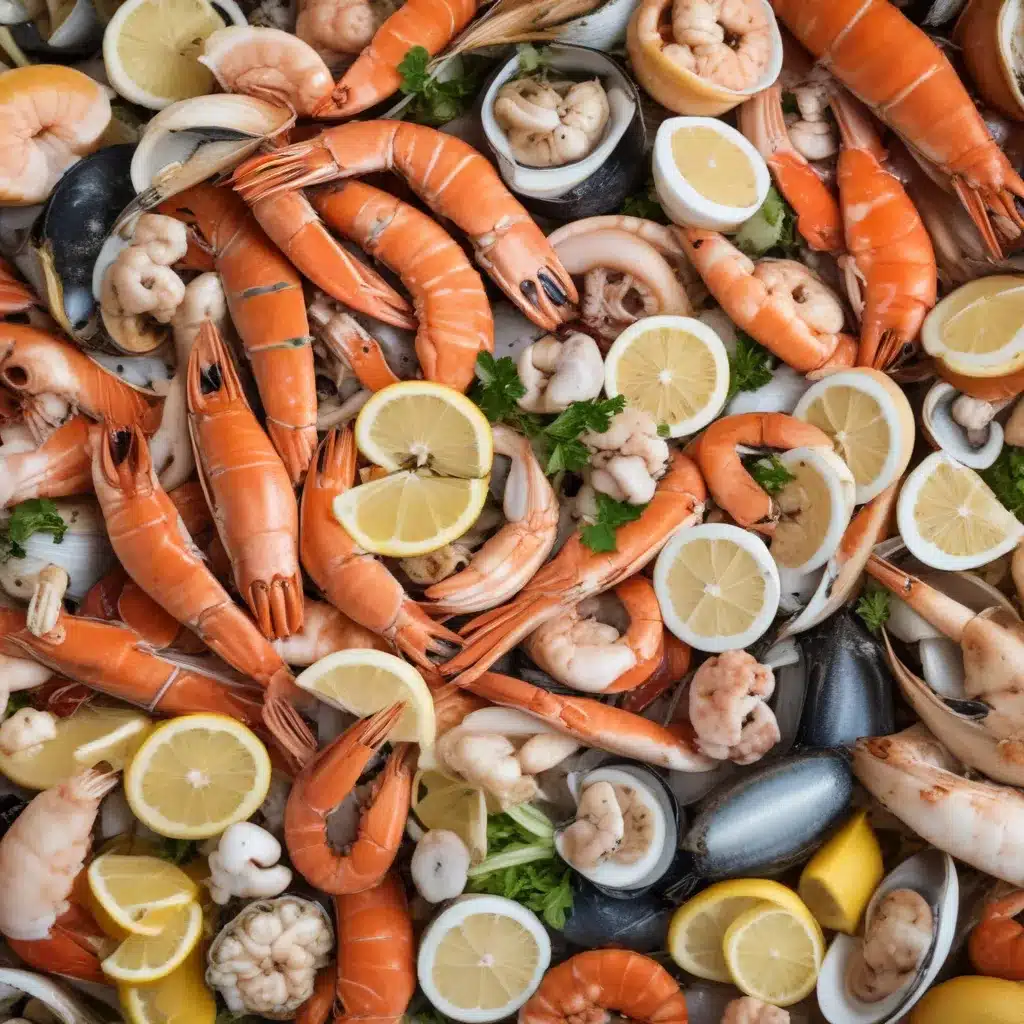
As a seafood dining expert for Fish Tales Cafe, I’m here to share essential tips for storing and preserving your favorite seafood items. Proper storage is crucial for maintaining the freshness, flavor, and food safety of delicate proteins like cod, shrimp, and beyond. Whether you’re meal prepping, entertaining guests, or just stocking your fridge, these strategies will help you enjoy exceptional seafood every time.
Refrigeration Practices
The most important factor for preserving fresh seafood is temperature control. Fish and shellfish should be kept at 40°F (4°C) or below to slow the growth of harmful bacteria. When transporting seafood, use an insulated cooler with ice packs to maintain this ideal chilled environment.
For raw, uncooked seafood, the shelf life is typically 1-2 days in the refrigerator. However, cooked seafood dishes can be safely stored for 3-4 days when chilled. To maximize freshness, always keep seafood on the bottom shelf of your fridge, which tends to be the coldest zone.
Airtight, moisture-proof packaging is also vital. Exposing seafood to open air can lead to spoilage and cross-contamination. Use resealable plastic bags or airtight containers to preserve quality. Lining the storage container with paper towels can help absorb excess moisture as well.
Freezing Techniques
Freezing is an excellent long-term storage option for seafood. When done correctly, it can preserve quality and flavor for up to 9 months. The key is maintaining a consistent freezer temperature of 0°F (-18°C) or below. Fluctuations or warmer temps can lead to freezer burn and degradation.
For best results, freeze seafood in a single layer on a baking sheet before transferring to airtight freezer bags or containers. Squeeze out as much air as possible to prevent oxidation. Labeling the packages with the contents and freeze date is also helpful for organization and avoiding waste.
When ready to use, the safest thawing method is in the refrigerator overnight. This gradual process preserves the delicate texture and prevents bacterial growth. Avoid thawing at room temperature, as this “danger zone” can quickly compromise food safety.
Freshness Indicators
Identifying spoiled seafood is crucial for avoiding foodborne illness. With fresh, high-quality seafood, you should notice a clear, shiny appearance, a mild oceanic aroma, and a firm, elastic texture. Discoloration, an overpowering “fishy” smell, or a slimy feel are all signs that the seafood has gone bad and should be discarded.
As a general rule, follow the storage time guidelines: 1-2 days for raw seafood, 3-4 days for cooked. However, it’s always smart to thoroughly inspect each item before cooking or consuming, no matter the age. If in doubt, err on the side of caution.
Sustainable Sourcing
Selecting responsibly-sourced seafood is not only better for the environment, but it also ensures superior freshness and flavor. Look for fish and shellfish that are in season, certified as sustainable, and ideally sourced locally. Building relationships with trusted, reputable purveyors can also help guarantee the highest quality.
When possible, choose wild-caught options over farmed varieties, as they often have a cleaner, more pronounced taste. And be mindful of mercury levels, opting for low-mercury fish like cod, salmon, or tilapia, especially for pregnant women or young children.
Handling and Preparation
To prevent cross-contamination, it’s critical to keep raw and cooked seafood separate during all stages of handling. Use different cutting boards, utensils, and work surfaces to avoid spreading harmful bacteria. Thorough cleaning and sanitization of your prep area is also a must.
When cooking, high heat is your best friend. Most seafood should be cooked to an internal temperature of 145°F (63°C) to eliminate any potential pathogens. Experimenting with flavorful marinades, rubs, and sauces can also help preserve moisture and amplify the natural taste of your seafood.
For those seeking gluten-free options, seafood inherently fits the bill. Just be mindful of any breading, fillings, or accompaniments that may contain wheat. Grilled, baked, or poached preparations are excellent gluten-free choices.
Meal Planning Strategies
When it comes to seafood, a little advance planning can go a long way. Batch cooking and meal prepping cooked items like shrimp, scallops, or fish fillets make for quick, easy assembly come mealtime. These components also freeze beautifully for longer-term storage.
For appetizers and snacks, consider canned or jarred seafood options like tuna, sardines, or smoked salmon. These pantry-friendly staples have excellent shelf life and can be paired with gluten-free crackers, veggie sticks, or a simple salad. Just be mindful of sodium content.
When selecting recipes, don’t be afraid to explore global seafood traditions, from Japanese seared tuna to Spanish seafood paella. Pairing your fish or shellfish with complementary flavors, textures, and even wine pairings can truly elevate the dining experience.
Regulatory Compliance
As you stock your kitchen and plan your seafood-centric meals, it’s crucial to be mindful of food safety regulations and labeling requirements. Look for clear country of origin information, as well as any pertinent allergen alerts.
Purchasing from reputable, traceable sources is also key. Seek out suppliers that maintain food safety certifications and are transparent about their harvesting and handling practices. This added layer of accountability can give you greater peace of mind about the seafood you’re serving.
By following these comprehensive seafood storage and preparation guidelines, you’ll be well on your way to enjoying the freshest, most flavorful seafood dishes, whether you’re dining in or out. For more mouthwatering recipes and expert tips, be sure to visit Fish Tales Cafe online. Bon appétit!

